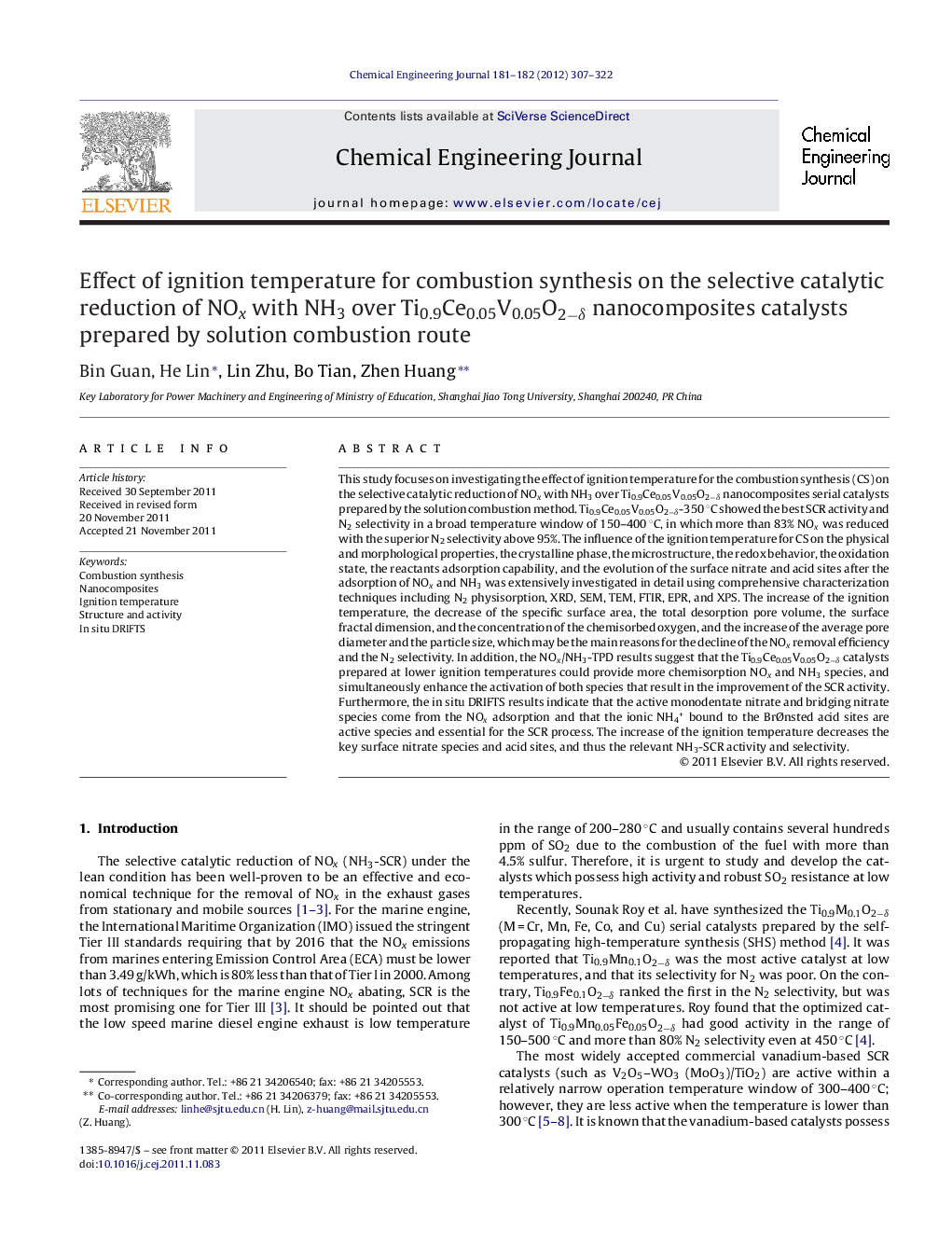| کد مقاله | کد نشریه | سال انتشار | مقاله انگلیسی | نسخه تمام متن |
|---|---|---|---|---|
| 150208 | 456446 | 2012 | 16 صفحه PDF | دانلود رایگان |

This study focuses on investigating the effect of ignition temperature for the combustion synthesis (CS) on the selective catalytic reduction of NOx with NH3 over Ti0.9Ce0.05V0.05O2−δ nanocomposites serial catalysts prepared by the solution combustion method. Ti0.9Ce0.05V0.05O2−δ-350 °C showed the best SCR activity and N2 selectivity in a broad temperature window of 150–400 °C, in which more than 83% NOx was reduced with the superior N2 selectivity above 95%. The influence of the ignition temperature for CS on the physical and morphological properties, the crystalline phase, the microstructure, the redox behavior, the oxidation state, the reactants adsorption capability, and the evolution of the surface nitrate and acid sites after the adsorption of NOx and NH3 was extensively investigated in detail using comprehensive characterization techniques including N2 physisorption, XRD, SEM, TEM, FTIR, EPR, and XPS. The increase of the ignition temperature, the decrease of the specific surface area, the total desorption pore volume, the surface fractal dimension, and the concentration of the chemisorbed oxygen, and the increase of the average pore diameter and the particle size, which may be the main reasons for the decline of the NOx removal efficiency and the N2 selectivity. In addition, the NOx/NH3-TPD results suggest that the Ti0.9Ce0.05V0.05O2−δ catalysts prepared at lower ignition temperatures could provide more chemisorption NOx and NH3 species, and simultaneously enhance the activation of both species that result in the improvement of the SCR activity. Furthermore, the in situ DRIFTS results indicate that the active monodentate nitrate and bridging nitrate species come from the NOx adsorption and that the ionic NH4+ bound to the BrØnsted acid sites are active species and essential for the SCR process. The increase of the ignition temperature decreases the key surface nitrate species and acid sites, and thus the relevant NH3-SCR activity and selectivity.
Figure optionsDownload as PowerPoint slideHighlights
► Selective catalytic reduction of NOx with NH3 over Ti0.9Ce0.05V0.05O2−δ.
► Catalysts are prepared by combustion synthesis at different ignition temperatures.
► Ti0.9Ce0.05V0.05O2−δ-350 °C shows the best SCR activity and N2 selectivity.
► Increasing ignition temperature deteriorates catalyst physical–chemical properties.
► Increasing ignition temperature decreases surface nitrate species and acidity.
Journal: Chemical Engineering Journal - Volumes 181–182, 1 February 2012, Pages 307–322